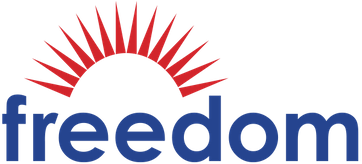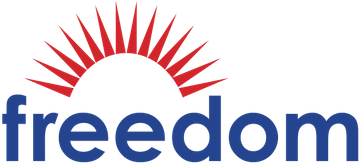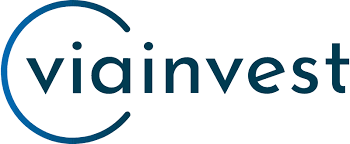DEBT HELP
Looking for Government Debt Relief Programs? Try These 8 Places Instead

How I Paid Down My Debt While Growing My Savings
When you’re drowning in debt, it can feel like there’s no way out. According to a 2018 study conducted by Northwestern Mutual, the average U.S. adult has more than $38,000 in personal debt, not including a mortgage. With that much debt and potentially high interest rates on loans and credit cards, your balances can grow over time, and make them difficult to pay it off.
If you’re struggling with how to pay off debt from loans and credit cards, you may be curious about government debt relief programs. Unfortunately, the U.S. federal government doesn’t offer any programs on its own. Thankfully, there are other strategies and programs you can use to manage your debt.
8 options for getting out of debt
To find a debt relief program that best suits your needs, consider what kind of debt you have, how much cash flow you have, and how much you can realistically pay toward your balances each month. Once you have an idea of what you owe and how much you can afford, choose one of the following methods for getting out of debt:
1. Federal student loan forgiveness
If you have federal student loans, you may be eligible for some form of loan forgiveness. These are the three most common types of loan forgiveness:
- Public Service Loan Forgiveness (PSLF): Certain jobs offer student loan forgiveness. For instance, if you work for a nonprofit organization or the government, you may qualify for PSLF. With PSLF, your loan balance is forgiven after you work for a qualifying employer for 10 years while making payments on your loans. The forgiven balance is not taxable as income.
- Income-driven repayment (IDR) plan forgiveness: If you can’t afford your payments, you may be able to lower them by applying for an IDR plan. And, after 20 to 25 years of making payments on your loans, the remaining balance is forgiven. However, the forgiven amount is taxable as income.
- Total and Permanent Disability Discharge: If you have a complete and permanent disability, you can qualify for loan discharge. If your loans are forgiven after Jan. 1, 2018, the remaining balance is not taxable as income.
2. The Servicemembers Civil Relief Act
If you’re active-duty military, you could qualify for some help through the Servicemembers Civil Relief Act (SCRA). The SRCA offers some benefits and protections, such as reducing the interest rates on preexisting loans to 6% and limiting the collection activity agencies can do.
Taking advantage of the SCRA can reduce your interest rates when you’re deployed, making the payments more manageable and preventing the balance from ballooning over time.
To find out whether you qualify for assistance through the SCRA, contact your local Armed Forces legal assistance office.
3. State or local programs
You may also be able to get debt relief assistance from state or local organizations. For example, some chapters of United Way can connect you with grants and loans to help you manage your debt, prevent you from falling behind on your payments, and allow you to stay in your home. Or, you can meet with local nonprofits that offer budget counseling and financial education classes to empower you to get back on your feet.
To find local agencies and services near you, call 2-1-1 or visit 211.org.
4. Balance transfers
If your balance isn’t too large — meaning you could reasonably afford to pay it off in a year or two — another option is to complete a balance transfer. With this approach, you transfer your credit card balance to another card with a lower APR. Some credit cards offer a 0% introductory APR for a set period, which gives you a year or more to pay off your debt without worrying about interest charges.
For example, Capital One Quicksilver Cash Rewards cardholders can enjoy 0% APR for the first 15 months (then 14.99% to 24.99% (variable)). With this card, you’ll have over a year to pay down your balance.
With 0% APR, the entirety of your payment goes toward the principal rather than interest. Taking advantage of a balance transfer can help you save money and pay off your debt faster.
If you decide to transfer a balance to a new card, come up with a plan to repay your debt as quickly as possible so you can pay off your balance before the introductory APR period ends. Focus on reducing your expenses and how to make extra cash to free up more money for payments.
5. Debt consolidation
If you need more time to pay down your debt, consider a debt consolidation loan. With this repayment strategy, you take out a personal loan for the amount of your existing credit card debt, medical bills, and other debt. You use the loan to pay off those balances. After that, you’ll have just one loan and one monthly payment.
Coronavirus Student Loan Relief: How the CARES Act Can Help You with Payments
Debt consolidation loans tend to have lower interest rates than credit cards. And, you can have up to seven years to repay your loan, which makes the payments more affordable.
However, make sure you come up with a repayment plan before consolidating your debt. Otherwise, you won’t address the root cause of your debt issues and the problem may get worse.
6. Private debt relief
If you need more intensive help, consider working with a private credit counseling organization. Reputable organizations can help you negotiate with your creditors to lower your interest rates and waive fees. They can help you create a debt management plan so you can pay off your balances within five years.
Most companies don’t charge upfront fees. However, there are many disreputable companies out there that charge high fees and encourage unscrupulous behavior, so make sure to do your homework before entering into an agreement with an organization.
Before working with a credit counseling agency, contact your state Attorney General and local consumer protection agency to ensure it’s a legitimate and trustworthy company.
7. Debt settlement
Another option is debt settlement. With this approach, you work with a debt relief company. Typically, you stop making payments on your debt and the debt relief company works with your creditors to convince them to settle for a smaller lump-sum payment. If the creditor accepts the offer, you can pay just a fraction of the amount owed and end any collection activity.
However, debt settlement can be risky. Because you stop making payments, your credit score can be severely damaged. There’s no guarantee that the creditors will accept a settlement, and debt settlement companies tend to charge high fees.
8. Bankruptcy
If you’ve exhausted all of your other options and can’t get out of debt, declaring bankruptcy can be a potential solution. If you go this route and your request is approved by the court, your debt can be discharged and your creditors can no longer pursue you for money.
There are two main forms of bankruptcy for consumers:
- Chapter 7: All of your non-exempt assets are liquidated. You may be able to keep your car and work-related tools, but all other valuables are sold to satisfy your creditors.
- Chapter 13: Under Chapter 13 bankruptcy, you may be able to keep your home and car. The court will approve a repayment plan that allows you to use your future income to pay down your debt rather than seizing your assets.
Although bankruptcy can satisfy your creditors, it should be viewed as a last resort. Court filing fees and attorney fees can be expensive. If approved, a bankruptcy can stay on your credit report for up to 10 years, making it hard for you to qualify for a loan, credit card, or even get approved for an apartment.
Bankruptcy can be beneficial if you’ve been significantly impacted by unexpected expenses, such as medical bills. However, the process can be expensive and time-consuming, and it should only be done if you can’t find another way to pay down your debt.
Managing your debt
If you’re struggling with credit card balances or student loans, you may be hoping that there are government relief programs that can help. Unfortunately, the U.S. federal government doesn’t operate any programs for consumers. Instead, come up with a debt repayment strategy on your own or work with an accredited credit counseling agency to develop a plan that works for you and your finances.
Great for Over $20K in Debt
 Visit Freedom Debt Relief
Visit Freedom Debt Relief
Freedom Debt Relief Benefits
- Recommended for debts $27,000 and higher
- Resolve your debt in as little as 24 – 48 months
- They’ve helped save their clients over $10 billion
- Over 600,000 customers and counting
Visit Freedom Debt Relief
Tally App Review [2021]: Can It Help You Crush Credit Card Debt Faster?
Unmasking Online Deception: An In-Depth Social Catfish Review
Purple Garden Psychics – ($1/Min) FREE Trial Offers, Real Experience & Benefits And More

Refinancing an Auto Loan: How to Know If It’s a Good Idea

Reverse Mortgages Pros and Cons: Ripoff or a Good Idea?

8 Ways it Just Got Easier to Achieve Student Loan Forgiveness
Unmasking Online Deception: An In-Depth Social Catfish Review

Orchard Bank Credit Cards | NOT a Scam!

PrivacyGuard Review

How to choose where to study as an international student


